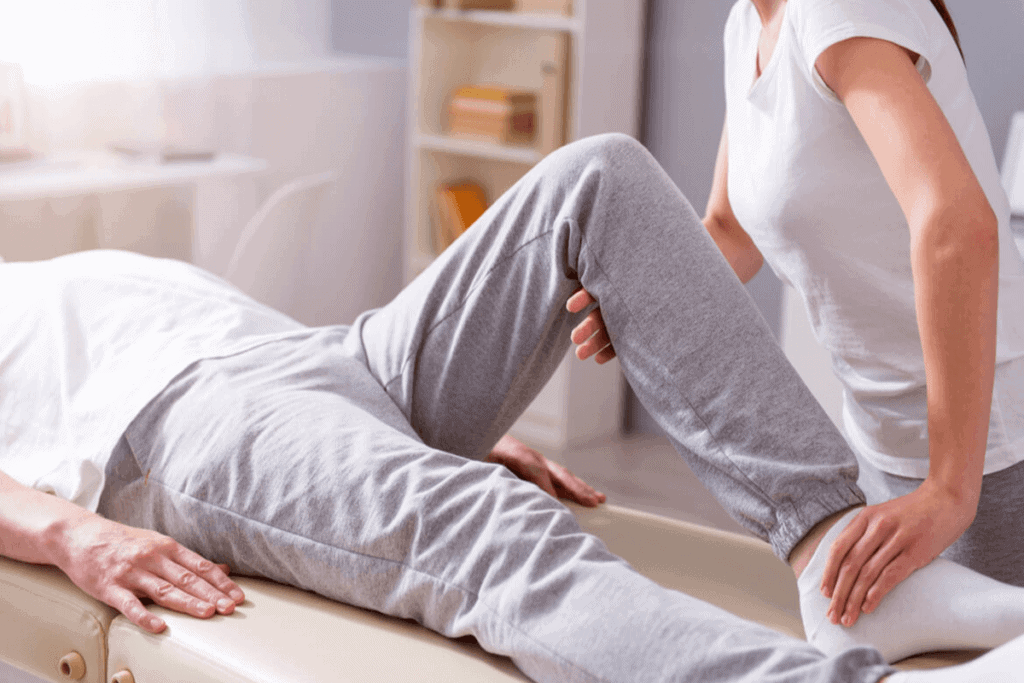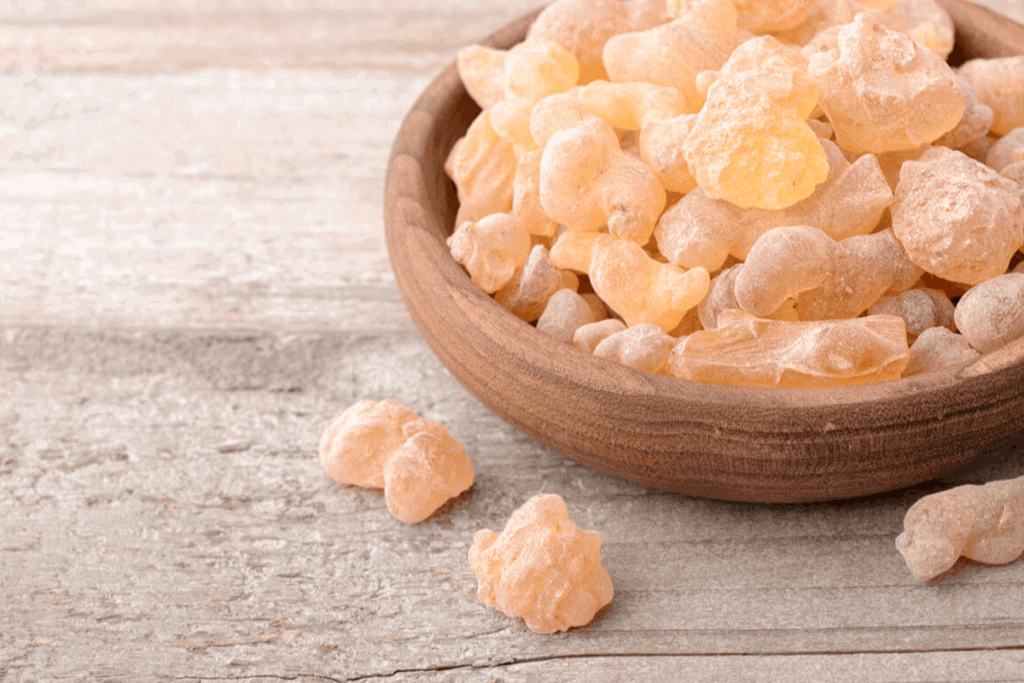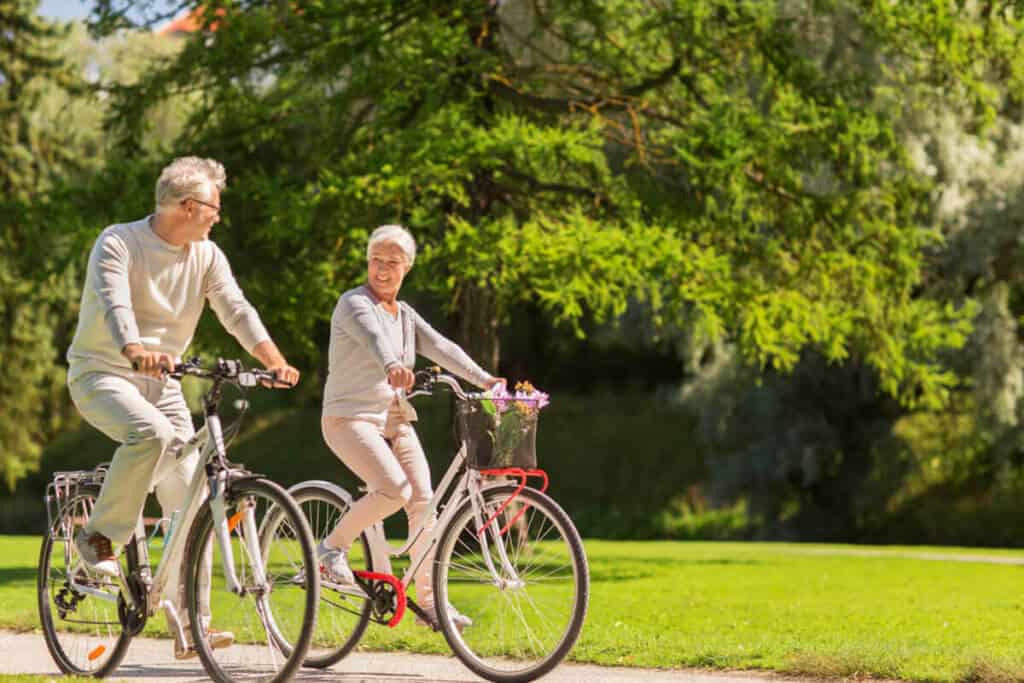While there is no cure for osteoarthritis, treatment aims to minimize symptoms and typically includes lifestyle modification and use of analgesics. (1) This article provides an overview of osteoarthritis risk factors, causes, signs, and symptoms, as well as an integrative treatment protocol using dietary supplements.
What is osteoarthritis?
Osteoarthritis (OA), the most common form of arthritis, is a progressive joint disease. OA is characterized by subchondral bone sclerosis, cartilage matrix degradation, and osteophyte formation. (24) The pathogenesis of the disease occurs through multiple pathways that result in inflammation, biological aging of chondrocytes, and the loss of structural components, including type II collagen and glycosaminoglycans (e.g., chondroitin sulfate and hyaluronic acid). (15) The disease is often assessed using the WOMAC (Western Ontario and McMaster Universities) knee osteoarthritis index, a symptom questionnaire examining stiffness, joint pain, and limitation of physical function. The Lequesne index is also commonly used to assess knee joint pain, function limitation, and maximum distance walked. (10)Causes and risk factors
Several causes and risk factors have been identified in the development of OA, including:- Aging
- Being female
- Excessive mechanical loading
- Genetic predisposition
- Inflammation
- Obesity
- Trauma (24)(15)

Signs, symptoms, and complications
Structural changes in OA can lead to several symptoms and may eventually progress to physical disability. Symptoms are commonly present in the knees, hips, hands, and spine. (15)Osteoarthritis signs and symptoms include:
- Crepitation (cracking) on motion
- Joint pain and stiffness
- Limited joint mobility
- Swelling
- Tenderness (16)(24)
Supplements for joint pain
Pharmaceutical treatment of OA includes non-steroidal anti-inflammatory drugs (NSAIDs), analgesics, and corticosteroids. Long-term use of these medications may result in severe side effects, which often prompts patients to explore complementary treatments. (1)(14) The dietary supplements outlined below have been shown to effectively reduce symptoms of OA.Glucosamine
Glucosamine is a water-soluble amino monosaccharide that is produced naturally in the body and is present in high quantities in articular cartilage. (24) The compound is a building block of glycosaminoglycans present in the cartilage matrix and synovial fluid, which reduces friction between cartilage in synovial joints. As a dietary supplement, it has been suggested that glucosamine is partially absorbed in the intestine and targets the joints, where it exerts protective actions, such as improving mobility and pain. (22)(24) Individual Randomized Double-Blind Placebo-Controlled (RDBPC) studies consistently demonstrate the effectiveness of glucosamine in reducing pain and global symptoms of OA. (12) However, reviews and meta-analyses have not confirmed this finding (22) Glucosamine is commonly recommended in combination with chondroitin, as research shows the combination may improve effectiveness. (7)
Turmeric (Curcuma longa)
https://fullscript.com/blog/curcuminCurcumin is an anti-inflammatory pigment and primary active constituent of turmeric. It has been shown to have over 100 molecular targets, the most significant being pro-inflammatory enzymes, as well as inflammatory transcription factors and their genomic expression. (1)(3) One formulation of curcumin known as Meriva® is a proprietary curcumin-phosphatidylcholine phytosome complex. Research has demonstrated that Meriva® may be used to improve the quality of life and decrease the use of NSAIDs in patients with osteoarthritis. (1) Meriva® is generally safe and tolerability has been shown to be comparable to ibuprofen and acetaminophen. (3)(5)Collagen
Collagen is a structural protein found in connective tissues and fibrous tissues of the body, including bone, cartilage, tendons, ligaments, intervertebral discs, skin, and hair. There are approximately 28 different types of collagen, but five of the most common types include type I (dermis, tendons, ligaments, bone), type II (cartilage, vitreous body, nucleus pulposus), type III (skin, vessel wall, reticular fibres), type IV (basal lamina, epithelial layer of basement membranes), and type V (lung, cornea, hair, fetal membranes, bones). (18) As a dietary supplement, hydrolyzed collagen is produced from various sources, which include natural eggshell membrane (NEM®), providing collagen type I, (14) chicken cartilage, providing collagen type II, bovine collagen, providing collagen type I and III, (15) and marine-sourced collagen, providing collagen type I. (19) Certain collagen supplements may also contain naturally-occurring chondroitin sulfate and hyaluronic acid, making their composition similar to that of human articular cartilage. (14) Research suggests that hydrolyzed collagen is used as a substrate to build the collagen fibrillar network, which may explain its beneficial effects on the symptoms of OA. (15) Studies have shown that collagen may result in a reduction in WOMAC index, stiffness score, and VAS score. Type 1 collagen found in the eggshell membrane has also been shown to improve joint pain and stiffness. (4)(15)(14)
Boswellia serrata
Boswellia serrata, also known as Indian frankincense, is an ancient herb with anti-arthritic, analgesic, and anti-inflammatory effects. 3-O-acetyl-11-keto-beta-boswellic acid (AKBA), considered to be its most bioactive component, is found in the gum resin extract of the plant. AKBA has been shown to inhibit the enzyme 5-lipoxygenase (5-LOX), which is involved in synthesizing leukotrienes, metabolites of arachidonic acid, in the inflammatory cascade. (16) Two proprietary formulations, Aflapin® and 5-Loxin®, are standardized to contain 20% and 30% AKBA, respectively. (17)(21) 5-Loxin® has been shown to inhibit tumor necrosis factor-α and interleukin-1β, which are pro-inflammatory cytokines. Aflapin® may inhibit the enzyme MMP-3 involved in cartilage degradation. Research has demonstrated that these Boswellia extracts are safe for long-term use in humans. (17)Chondroitin sulfate
In the body, chondroitin sulfate (CS) provides structure, resistance, and elasticity to cartilage tissue. (23) CS consists of glycosaminoglycans and is attached to proteins, forming part of the aggrecan of cartilage. (20) CS supplements are manufactured from animal sources including bovine and shark cartilage. (8) Clinical studies have demonstrated that CS supplementation may slow the progression of OA, increase joint function, reduce pain and increase total cartilage volume. (23)(11) One study investigated the effects of CS on the brain response to pain stimulation using functional magnetic resonance imaging (fMRI) in patients with knee osteoarthritis. Pain decreased in individuals receiving CS compared with the group receiving the placebo. (9) Several mechanisms responsible for the benefits of CS have been proposed, including suppressing inflammatory mediators, stimulating the production of the extracellular cartilage matrix, and inhibiting the degradation of cartilage. (20)
The bottom line
Several nutrients and botanicals, including glucosamine, turmeric, collagen, Boswellia serrata, and chondroitin sulfate, have been shown to reduce osteoarthritis symptoms in clinical trials. There is also promising preliminary evidence demonstrating a reduction in OA symptoms with green-lipped mussel extract, (2) L-carnitine, (6) and pycnogenol. (13) Further clinical trials are needed to demonstrate effective doses and safety. If you are a patient, we recommend speaking with your healthcare provider to find out whether these supplements are right for your wellness plan.If you are a practitioner, view our joint pain protocol.
- Belcaro, G., Cesarone, M. R., Dugall, M., Pellegrini, L., Ledda, A., Grossi, M. G., … Appendino, G. (2010). Efficacy and safety of Meriva®, a curcumin-phosphatidylcholine complex, during extended administration in osteoarthritis patients. Alternative medicine review, 15(4), 337-44.
- Coulson, S., Vecchio, P., Gramotnev, H., & Vitetta, L. (2012). Green-lipped mussel (Perna canaliculus) extract efficacy in knee osteoarthritis and improvement in gastrointestinal dysfunction: A pilot study. Inflammopharmacology, 20(2), 71-76.
- Di Pierro, F., Rapacioli, G., Di Maio, E. A., Appendino, G., Franceschi, F., & Togni, S. (2013). Comparative evaluation of the pain-relieving properties of a lecithinized formulation of curcumin (Meriva(®)), nimesulide, and acetaminophen. Journal of pain research, 6, 201–205.
- García-Coronado, J. M., Martínez-Olvera, L., Elizondo-Omaña, R. E., Acosta-Olivo, C. A., Vilchez-Cavazos, F., Simental-Mendía, L. E., & Simental-Mendía, M. (2018). Effect of collagen supplementation on osteoarthritis symptoms: A meta-analysis of randomized placebo-controlled trials. International Orthopaedics, 43(3), 531-538.
- Kuptniratsaikul, V., Thanakhumtorn, S., Chinswangwatanakul, P., Wattanamongkonsil, L., & Thamlikitkul, V. (2009). Efficacy and safety of Curcuma domestica extracts in patients with knee osteoarthritis. The Journal of Alternative and Complementary Medicine, 15(8), 891-897.
- Mahdavi, A. M., Mahdavi, R., Kolahi, S., Zemestani, M., & Vatankhah, A. (2015). L-Carnitine supplementation improved clinical status without changing oxidative stress and lipid profile in women with knee osteoarthritis. Nutrition Research, 35(8), 707-715.
- McAlindon, T. E., Lavalley, M. P., Gulin, J. P., & Felson, D. T. (2000). Glucosamine and chondroitin for treatment of osteoarthritis: A systematic quality assessment and meta-analysis. JAMA, 283(11), 1469.
- MedlinePlus. (2018, June 08). Chondroitin sulfate. Retrieved from https://medlineplus.gov/druginfo/natural/744.html
- Monfort, J., Pujol, J., Contreras-Rodríguez, O., Llorente-Onaindia, J., López-Solà, M., Blanco-Hinojo, L., . . . Benito, P. (2017). Effects of chondroitin sulfate on brain response to painful stimulation in knee osteoarthritis patients. A randomized, double-blind, placebo-controlled functional magnetic resonance imaging study. Medicina Clínica, 148(12), 539-547.
- Pavelká, K., Gatterová, J., Olejarová, M., Machacek, S., Giacovelli, G., & Rovati, L. C. (2002). Glucosamine sulfate use and delay of progression of knee osteoarthritis. Archives of Internal Medicine, 162(18), 2113.
- Railhac, J., Zaim, M., Saurel, A., Vial, J., & Fournie, B. (2012). Effect of 12 months treatment with chondroitin sulfate on cartilage volume in knee osteoarthritis patients: A randomized, double-blind, placebo-controlled pilot study using MRI. Clinical Rheumatology, 31(9), 1347-1357.
- Richy, F., Bruyere, O., Ethgen, O., Cucherat, M., Henrotin, Y., & Reginster, J. (2003). Structural and symptomatic efficacy of glucosamine and chondroitin in knee osteoarthritis. Archives of Internal Medicine, 163(13), 1514.
- Rohdewald P. J. (2018). Review on sustained relief of osteoarthritis symptoms with a proprietary extract from pine bark, pycnogenol. Journal of medicinal food, 21(1), 1–4.
- Ruff, K. J., Winkler, A., Jackson, R. W., DeVore, D. P., & Ritz, B. W. (2009). Eggshell membrane in the treatment of pain and stiffness from osteoarthritis of the knee: A randomized, multicenter, double-blind, placebo-controlled clinical study. Clinical rheumatology, 28(8), 907–914.
- Schauss, A. G., Stenehjem, J., Park, J., Endres, J. R., & Clewell, A. (2012). Effect of the novel low molecular weight hydrolyzed chicken sternal cartilage extract, BioCell Collagen, on improving osteoarthritis-related symptoms: A randomized, double-blind, placebo-controlled trial. Journal of Agricultural and Food Chemistry, 60(16), 4096-4101.
- Sengupta, K., Alluri, K. V., Satish, A. R., Mishra, S., Golakoti, T., Sarma, K. V., … Raychaudhuri, S. P. (2008). A double blind, randomized, placebo controlled study of the efficacy and safety of 5-Loxin for treatment of osteoarthritis of the knee. Arthritis research & therapy, 10(4), R85.
- Sengupta, K., Krishnaraju, A. V., Vishal, A. A., Mishra, A., Trimurtulu, G., Sarma, K. V., … Raychaudhuri, S. P. (2010). Comparative efficacy and tolerability of 5-Loxin® and Aflapin® against osteoarthritis of the knee: A double blind, randomized, placebo controlled clinical study. International journal of medical sciences, 7(6), 366–377.
- Sibilla, S., Godfrey, M., Brewer, S., Budh-Raja, A., & Genovese, L. (2015). An overview of the beneficial effects of hydrolysed collagen as a nutraceutical on skin properties: Scientific background and clinical studies. The Open Nutraceuticals Journal, 8(1), 29-42.
- Silvipriya, K., Kumar, K., Bhat, A., Kumar, B., John, A., & Lakshmanan, P. (2015). Collagen: Animal sources and biomedical application. Journal of Applied Pharmaceutical Science, 5(3), 123-127.
- Vasiliadis, H. S., & Tsikopoulos, K. (2017). Glucosamine and chondroitin for the treatment of osteoarthritis. World journal of orthopedics, 8(1), 1–11.
- Vishal, A. A., Mishra, A., & Raychaudhuri, S. P. (2011). A double blind, randomized, placebo controlled clinical study evaluates the early efficacy of aflapin in subjects with osteoarthritis of knee. International journal of medical sciences, 8(7), 615–622.
- Wandel, S., Jüni, P., Tendal, B., Nüesch, E., Villiger, P. M., Welton, N. J., … Trelle, S. (2010). Effects of glucosamine, chondroitin, or placebo in patients with osteoarthritis of hip or knee: Network meta-analysis. BMJ (Clinical research ed.), 341, c4675.
- Zegels, B., Crozes, P., Uebelhart, D., Bruyère, O., & Reginster, J. (2013). Equivalence of a single dose (1200 mg) compared to a three-time a day dose (400 mg) of chondroitin 4&6 sulfate in patients with knee osteoarthritis. Results of a randomized double blind placebo controlled study. Osteoarthritis and Cartilage, 21(1), 22-27.
- Zhu, X., Sang, L., Wu, D., Rong, J., & Jiang, L. (2018). Effectiveness and safety of glucosamine and chondroitin for the treatment of osteoarthritis: a meta-analysis of randomized controlled trials. Journal of orthopaedic surgery and research, 13(1), 170.





